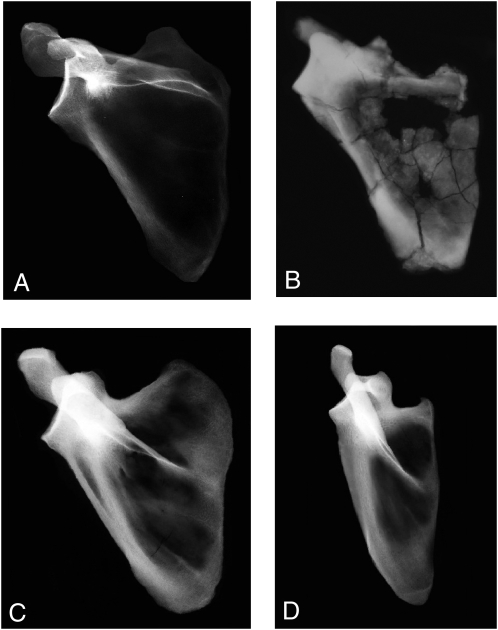Fig. 3.
X-rays of hominoid scapulas. (A) Modern human (CMNH-HTH-2450). (B) KSD-VP-1/1g. (C) Gorilla (CMNH-B-1730). (D) Pan (CMNH-B-3551). Each specimen has been scaled to the same approximate superoinferior glenoid height and aligned with its vertebral border approximately vertical. Note the uniqueness of Pan if a line is drawn connecting each specimen's superior and inferior angles (largely vertical in D). The human's glenoid angle is among the most superior in our sample (n = 21). All specimens, save Pan, have similar glenoid orientations. Both Pan and Gorilla are distinguished from the hominids by their substantially greater inferomedial spine orientation. KSD-VP-1/1g is most similar to humans. Pan is clearly the morphological outlier.

